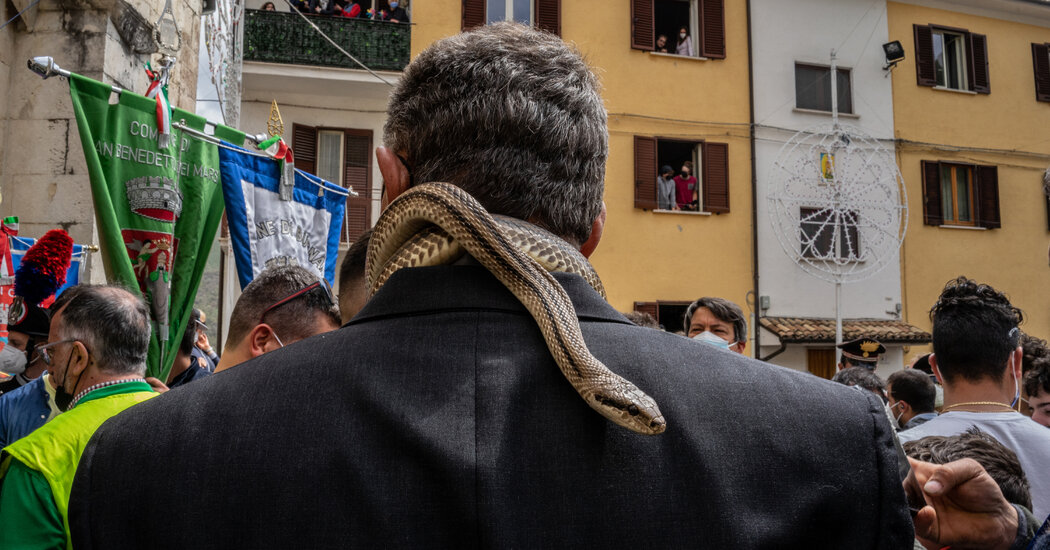It was the morning of May 1, and the Italian village of Cocullo was almost unrecognizable. The typical placidity of its quiet alleys and muted central square had given way to several thousand people: religious travelers, musicians, young women in ornate costumes, tourists from the far corners of the country and beyond.
A group of pilgrims from Atina, a town some 30 miles south, walked slowly toward the Church of Santa Maria, singing ancient religious songs and carrying a centuries-old cross. They were accompanied by bagpipe players and the town band.
It wasn’t the crowds, though, that made this gathering special. It was the snakes.
At every corner, someone was handling one of the animals, which slithered across their hands and arms. The boys and girls of the village took turns showcasing the creatures to small groups of people who crowded around to take pictures and ask questions.
At noon, silence fell over the scene, and a large figure, carved from wood, emerged: the statue of San Domenico. In front of the church, people began draping the figure with snakes.
At last we reached the moment that had drawn me here: The statue, wrapped in serpents, was lifted into the air above the captivated crowd — and the centuries-old ritual was underway.
I had arrived in Cocullo — a medieval village in the Abruzzo region — four days earlier with the photographer Elisabetta Zavoli to document the Rito dei Serpari, or the Rite of the Snake Charmers. The Catholic celebration, which takes place each year on May 1, is held in honor of San Domenico, who is credited with removing snakes from local farmers’ fields. Many historians, however, believe that its roots lie in the ancient worship of a goddess named Angitia, known for her association with the animals.
Despite the obscurity of its origins, the Cocullo festival is plainly a holdover from snake-based mystical practices that, thousands of years ago, were widespread in central and southern Italy. And since the beginning of the 20th century, the ritual has become a tourist attraction, drawing visitors who are interested in its folklore as much as its religion ties.
In the days leading up to the festival, Elisabetta and I joined a handful of local “serpari” — the term used to describe the local snake catchers and charmers — on their hunts to catch the animals used in the procession.
Marco Ognibene Mascioli, a 38-year-old soldier stationed in Bologna, was one of them. On his annual trip to Cocullo to fulfill his…
Click Here to Read the Full Original Article at NYT > Travel…
